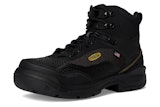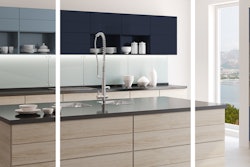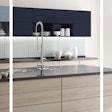Add reflectivity to the laundry list of wood floor selling points.
Surfaces that reflect light improve building sustainability, budget and user productivity, according to a white paper issued by Armstrong Floor Products (Lancaster, Pa.).
Although daylighting is normally associated with the placement of windows, the white paper describes argues that reflective surfaces, such as natural or light-stained wood floors, make a valuable contribution to the practice.
Capturing more daylight means less reliance on carbon-based fuels. With decreasing dependence on carbon-based fuels comes decreased expenditures on generating electricity. More natural light has also been shown to increase academic performance in classrooms, according to the white paper.
Reflective surfaces are promising enough that the newest version of LEED rewards high light reflective flooring within the IEQ Lighting Quality Credit.
“It is an issue that most facility managers are just beginning to think about,” said Amy Costello, sustainability manager for Armstrong, in a statement. “They realize that the flooring can have an effect on daylighting. It’s not the primary factor in daylighting, but it’s something to consider.”
The paper is online here.
New Selling Point for Wood Floor: Reflectivity, Says Armstrong
Read Next
September 15, 2025
Resource Book
Looking for a specific product or a company? Wood Floor Business has the only comprehensive database of the industry.
Learn More
Podcasts
All Things Wood Floor, created by Wood Floor Business magazine, talks to interesting wood flooring pros to share knowledge, stories and tips on everything to do with wood flooring, from installation, sanding and finishing to business management.
Learn More






















